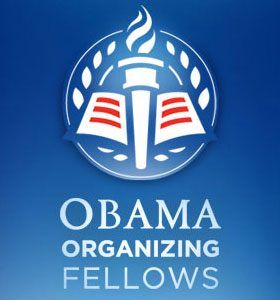Monday, February 28, 2011
Friday, February 25, 2011
Saturday, February 12, 2011
Saturday, February 5, 2011
Frederick Douglass
Frederick Douglass (born Frederick Augustus Washington Bailey, February 1818 – February 20, 1895) was an American social reformer, orator, writer and statesman. After escaping from slavery, he became a leader of the abolitionist movement, known for his dazzling oratory and incisive antislavery writing. He stood as a living counter-example to slaveholders' arguments that slaves did not have the intellectual capacity to function as independent American citizens. He became a major speaker for the cause of abolition.
Frederick Douglass was one of the foremost leaders of the abolitionist movement, which fought to end slavery within the United States in the decades prior to the Civil War.
A brilliant speaker, Douglass was asked by the American Anti-Slavery Society to engage in a tour of lectures, and so became recognized as one of America's first great black speakers. He won world fame when his autobiography was publicized in 1845. Two years later he bagan publishing an antislavery paper called the North Star.
Douglass served as an adviser to President Abraham Lincoln during the Civil War and fought for the adoption of constitutional amendments that guaranteed voting rights and other civil liberties for blacks. Douglass provided a powerful voice for human rights during this period of American history and is still revered today for his contributions against racial injustice.
Frederick Douglass was born in a slave cabin, in February, 1818, near the town of Easton, on the Eastern Shore of Maryland. Separated from his mother when only a few weeks old he was raised by his grandparents. At about the age of six, his grandmother took him to the plantation of his master and left him there. Not being told by her that she was going to leave him, Douglass never recovered from the betrayal of the abandonment. When he was about eight he was sent to Baltimore to live as a houseboy with Hugh and Sophia Auld, relatives of his master. It was shortly after his arrival that his new mistress taught him the alphabet. When her husband forbade her to continue her instruction, because it was unlawful to teach slaves how to read, Frederick took it upon himself to learn. He made the neighborhood boys his teachers, by giving away his food in exchange for lessons in reading and writing.
Douglass is noted as saying that "knowledge is the pathway from slavery to freedom." As Douglass learned and began to read newspapers, political materials, and books of every description, he was exposed to a new realm of thought that led him to question and then condemn the institution of slavery. In later years, Douglass credited The Columbian Orator, which he discovered at about age twelve, with clarifying and defining his views on freedom and human rights.At about the age of twelve or thirteen Douglass purchased a copy of The Columbian Orator, a popular schoolbook of the time, which helped him to gain an understanding and appreciation of the power of the spoken and the written word, as two of the most effective means by which to bring about permanent, positive change.
Returning to the Eastern Shore, at approximately the age of fifteen, Douglass became a field hand, and experienced most of the horrifying conditions that plagued slaves during the 270 years of legalized slavery in America. But it was during this time that he had an encounter with the slavebreaker Edward Covey. Their fight ended in a draw, but the victory was Douglass', as his challenge to the slavebreaker restored his sense of self-worth. After an aborted escape attempt when he was about eighteen, he was sent back to Baltimore to live with the Auld family, and in early September, 1838, at the age of twenty, Douglass succeeded in escaping from slavery by impersonating a sailor.
He went first to New Bedford, Massachusetts, where he and his new wife Anna Murray began to raise a family. Whenever he could he attended abolitionist meetings, and, in October, 1841, after attending an anti-slavery convention on Nantucket Island, Douglass became a lecturer for the Massachusetts Anti-Slavery Society and a colleague of William Lloyd Garrison. This work led him into public speaking and writing. He published his own newspaper, The North Star, participated in the first women's rights convention at Seneca Falls, in 1848, and wrote three autobiographies. He was internationally recognized as an uncompromising abolitionist, indefatigable worker for justice and equal opportunity, and an unyielding defender of women's rights. He became a trusted advisor to Abraham Lincoln, United States Marshal for the District of Columbia, Recorder of Deeds for Washington, D.C., and Minister-General to the Republic of Haiti.
In addition to his oratory, Douglass wrote several autobiographies, eloquently describing his life as a slave, and his struggles to be free. His first autobiography, Narrative of the Life of Frederick Douglass, an American Slave, was published in 1845 and was his best-known work, influential in gaining support for abolition. He wrote two more autobiographies, with his last, Life and Times of Frederick Douglass, published in 1881 and covering events through and after the Civil War.
After the Civil War, Douglass remained very active in America's struggle to reach its potential as a "land of the free". Douglass actively supported women's suffrage. Following the war, he worked on behalf of equal rights for freedmen, and held multiple public offices.
Douglass was a firm believer in the equality of all people, whether black, female, Native American, or recent immigrant. He was fond of saying, "I would unite with anybody to do right and with nobody to do wrong."
1.Douglass, Frederick. Life and Times of Frederick Douglass. New York: Collier Books, 1962.
2.The Narrative of the Life of Frederick Douglass An American Slave electronic text.
3.Narrative of the Life of Frederick Douglass: An American Slave. Cambridge: Belknap Press of Harvard University, 1960.
4.Foner, Philip S. The Life and Writings of Frederick Douglass: Early Years 1817-1849. New York: International Publishers, 1950.
5.Foner, Philip S. The Life and Writings of Frederick Douglass: Pre-Civil War Decade 1850-1860. New York: International Publishers, 1950.
6.Foner, Philip S. The Life and Writings of Frederick Douglass: The Civil War 1861-1865. New York: International Publishers, 1952.
7.Foner, Philip S. The Life and Writings of Frederick Douglass: Reconstruction and After. New York: International Publishers, 1955.
8.Huggins, Nathan Irvin. Slave and Citizen: The Life of Frederick Douglass. Boston: Little, Brown, 1980.
9.Quarles, Benjamin. Frederick Douglass. Washington, D.C.: The Associated Publishers, Inc., 1948.
Friday, February 4, 2011
Thursday, February 3, 2011
Harriet Tubman
Harriet Tubman is perhaps the most well-known of all the Underground Railroad's "conductors." During a ten-year span she made 19 trips into the South and escorted over 300 slaves to freedom. And, as she once proudly pointed out to Frederick Douglass, in all of her journeys she "never lost a single passenger."
Tubman was born a slave in Maryland's Dorchester County around 1820. At age five or six, she began to work as a house servant. Seven years later she was sent to work in the fields. While she was still in her early teens, she suffered an injury that would follow her for the rest of her life. Always ready to stand up for someone else, Tubman blocked a doorway to protect another field hand from an angry overseer. The overseer picked up and threw a two-pound weight at the field hand. It fell short, striking Tubman on the head. She never fully recovered from the blow, which subjected her to spells in which she would fall into a deep sleep.
Around 1844 she married a free black named John Tubman and took his last name. (She was born Araminta Ross; she later changed her first name to Harriet, after her mother.) In 1849, in fear that she, along with the other slaves on the plantation, was to be sold, Tubman resolved to run away. She set out one night on foot. With some assistance from a friendly white woman, Tubman was on her way. She followed the North Star by night, making her way to Pennsylvania and soon after to Philadelphia, where she found work and saved her money. The following year she returned to Maryland and escorted her sister and her sister's two children to freedom. She made the dangerous trip back to the South soon after to rescue her brother and two other men. On her third return, she went after her husband, only to find he had taken another wife. Undeterred, she found other slaves seeking freedom and escorted them to the North.
Tubman returned to the South again and again. She devised clever techniques that helped make her "forays" successful, including using the master's horse and buggy for the first leg of the journey; leaving on a Saturday night, since runaway notices couldn't be placed in newspapers until Monday morning; turning about and heading south if she encountered possible slave hunters; and carrying a drug to use on a baby if its crying might put the fugitives in danger. Tubman even carried a gun which she used to threaten the fugitives if they became too tired or decided to turn back, telling them, "You'll be free or die."
By 1856, Tubman's capture would have brought a $40,000 reward from the South. On one occasion, she overheard some men reading her wanted poster, which stated that she was illiterate. She promptly pulled out a book and feigned reading it. The ploy was enough to fool the men.
Tubman had made the perilous trip to slave country 19 times by 1860, including one especially challenging journey in which she rescued her 70-year-old parents. Of the famed heroine, who became known as "Moses," Frederick Douglass said, "Excepting John Brown -- of sacred memory -- I know of no one who has willingly encountered more perils and hardships to serve our enslaved people than [Harriet Tubman]."
And John Brown, who conferred with "General Tubman" about his plans to raid Harpers Ferry, once said that she was "one of the bravest persons on this continent."
Becoming friends with the leading abolitionists of the day, Tubman took part in antislavery meetings. On the way to such a meeting in Boston in 1860, in an incident in Troy, New York, she helped a fugitive slave who had been captured.
During the Civil War Harriet Tubman worked for the Union as a cook, a nurse, and even a spy. After the war she settled in Auburn, New York, where she would spend the rest of her long life. She died in 1913.
Harriet Tubman
Incident in Troy, New York
In the spring of 1860, Harriet Tubman was requested by Mr. Gerrit Smith to go to Boston to attend a large Anti-Slavery meeting. On her way, she stopped at Troy to visit a cousin, and while there the colored people were one day startled with the intelligence that a fugitive slave, by the name of Charles Nalle, had been followed by his master (who was his younger brother, and not one grain whiter than he), and that he was already in the hands of the officers, and was to be taken back to the South. The instant Harriet heard the news, she started for the office of the United States Commissioner, scattering the tidings as she went. An excited crowd was gathered about the office, through which Harriet forced her way, and rushed up stairs to the door of the room where the fugitive was detained. A wagon was already waiting before the door to carry off the man, but the crowd was even then so great, and in such a state of excitement, that the officers did not dare to bring the man down. On the opposite side of the street stood the colored people, watching the window where they could see Harriet's sun-bonnet, and feeling assured that so long as she stood there, the fugitive was still in the office. Time passed on, and he did not appear. 'They've taken him out another way, depend upon that," said some of the colored people. "No," replied others, "there stands ÔMoses' yet, and as long as she is there, he is safe." Harriet, now seeing the necessity for a tremendous effort for his rescue, sent out some little boys to cry fire. The bells rang, the crowd increased, till the whole street was a dense mass of people. Again and again the officers came out to try and clear the stairs, and make a way to take their captive down; others were driven down, but Harriet stood her ground, her head bent and her arms folded. "Come, old woman, you must get out of this," said one of the officers ; "I must have the way, cleared; if you can't get down alone, some one will help you." Harriet, still putting on a greater appearance of decrepitude, twitched away from him, and kept her place. Offers were made to buy Charles from his master, who at first agreed to take twelve hundred dollars for him; but when this was subscribed, he immediately raised the price to fifteen hundred. The crowd grew more excited. A gentleman raised a window and called out, "Two hundred dollars for his rescue, but not one cent to his master! " This was responded to by a roar of satisfaction from the crowd below. At length the officers appeared, and announced to the crowd, that if they would open a lane to the wagon, they would promise to bring the man down the front way.
The lane was opened, and the man was brought out -- a tall, handsome, intelligent white man, with his wrists manacled together, walking between the U. S. Marshal and another officer, and behind him his brother and his master, so like him that one could hardly be told from the other. The moment they appeared, Harriet roused from her stooping posture, threw up a window, and cried to her friends: "Here he comes -- take him!" and then darted down the stairs like a wild-cat. She seized one officer and pulled him down, then another, and tore him away from the man ; and keeping her arms about the slave, she cried to her friends: ÒDrag us out! Drag him to the river! Drown him! but don't let them have him!" They were knocked down together, and while down, she tore off her sun-bonnet and tied it on the head of the fugitive. When he rose, only his head could be seen, and amid the surging mass of people the slave was no longer recognized, while the master appeared like the slave. Again and again they were knocked down, the poor slave utterly helpless, with his manacled wrists, streaming with blood. Harriet's outer clothes were torn from her, and even her stout shoes were pulled from her feet, yet she never relinquished her hold of the man, till she had dragged him to the river, where he was tumbled into a boat, Harriet following in a ferry-boat to the other side. But the telegraph was ahead of them, and as soon as they landed he was seized and hurried from her sight. After a time, some school children came hurrying along, and to her anxious inquiries they answered, "He is up in that house, in the third story." Harriet rushed up to the place. Some men were attempting to make their way up the stairs. The officers were firing down, and two men were lying on the stairs, who had been shot. Over their bodies our heroine rushed, and with the help of others burst open the door of the room, and dragged out the fugitive, whom Harriet carried down stairs in her arms. A gentleman who was riding by with a fine horse, stopped to ask what the disturbance meant; and on hearing the story, his sympathies seemed to be thoroughly aroused; he sprang from his wagon, calling out, "That is a blood-horse, drive him till be drops." The poor man was hurried in; some of his friends jumped in after him, and drove at the most rapid rate to Schenectady.
Harriet, the Moses of her people, by Sarah H. Bradford
Subscribe to:
Posts (Atom)













































